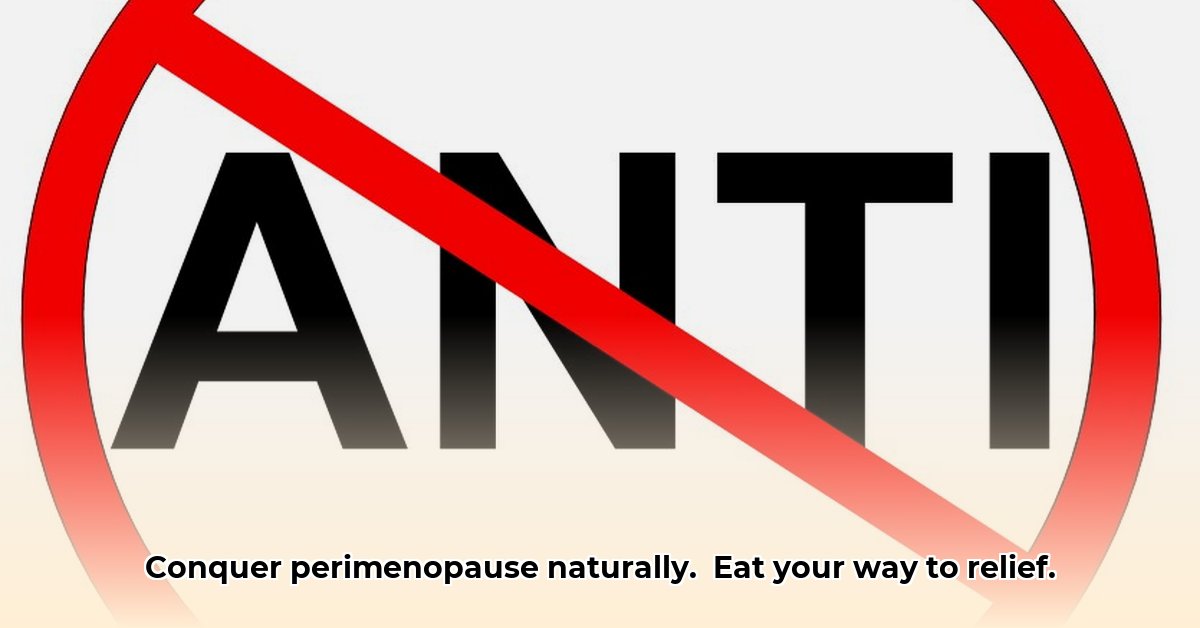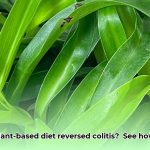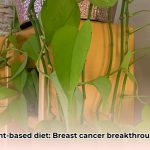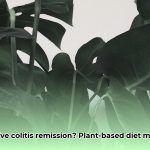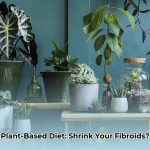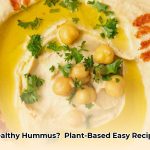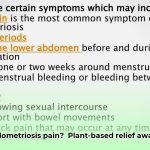Perimenopause – that tricky time leading up to menopause – can bring on a whole host of unwelcome symptoms like hot flashes, fatigue, and brain fog. But what if a simple change in what you eat could make a big difference? This guide will show you how to ease your perimenopausal journey. We’ll dive into the science behind inflammation and its link to those pesky perimenopause symptoms and give you a straightforward, easy-to-follow plan to bring down the inflammation and feel better by introducing the best anti-inflammatory foods for menopause hormone balance. For more in-depth information, check out this helpful guide on anti-inflammatory foods. We’ll highlight the best foods to eat, the ones to limit, and even offer some meal ideas to make it all manageable. It’s about making small, sustainable changes that add up to big results, so let’s work together to get you feeling your best during this life stage.
Understanding Perimenopause and Inflammation: A Deeper Dive
Perimenopause, the transitional phase leading to menopause, marks significant hormonal fluctuations in a woman’s body. These shifts, particularly the decline in estrogen levels, can trigger a cascade of effects, one of which is increased inflammation. Inflammation, the body’s natural response to injury or infection, becomes problematic when it’s chronic. Chronic inflammation has been linked to a wide range of health issues, including those that frequently surface during perimenopause:
- Hot Flashes: Inflammation can exacerbate the intensity and frequency of hot flashes, making them more disruptive.
- Mood Swings: The rise in inflammatory markers can impact neurotransmitter function in the brain, contributing to mood instability and increased irritability.
- Joint Pain: Inflammation can inflame joint tissues, leading to stiffness, aching, and reduced mobility.
- Brain Fog: Chronic inflammation can affect cognitive function, leading to difficulty concentrating, memory lapses, and overall mental fatigue.
- Fatigue: The body’s constant state of alert due to chronic inflammation can deplete energy reserves, resulting in persistent tiredness.
By understanding the intricate connection between perimenopause and inflammation, you can strategically target dietary changes to alleviate symptoms and improve your overall well-being. Let’s explore how anti-inflammatory foods can be your allies in this journey.
Your Anti-Inflammation Power Plate: Foods to Fill Your Cart
The key isn’t to deprive yourself; it’s about making nourishing choices that support your well-being. Let’s focus on adding these inflammation-fighting superstars to your diet:
- Omega-3 Powerhouses: These healthy fats are inflammation’s nemesis. Think wild-caught salmon, sardines, mackerel, those tiny flaxseeds, chia seeds, and tasty walnuts. Aim for at least two to three servings of fatty fish each week – your body will thank you! Omega-3 fatty acids, specifically EPA and DHA, are known to reduce the production of inflammatory compounds in the body.
- Vibrant Antioxidant Warriors: Berries bursting with color (blueberries, strawberries, raspberries, blackberries), leafy greens packed with goodness (spinach, kale, Swiss chard), and earthy spices like turmeric and ginger – these are your antioxidant heroes. They fight off those pesky free radicals, protecting your cells and reducing inflammation. Antioxidants neutralize free radicals, unstable molecules that can damage cells and contribute to inflammation. Adding a tablespoon of turmeric powder to your cooking or enjoying ginger tea can offer additional anti-inflammatory benefits.
- Fiber Fiesta for a Happy Gut: Whole grains (oats, quinoa, brown rice), legumes (like lentils, chickpeas, and beans), and fruits (apples, pears, bananas) are all fiber-rich. Fiber keeps your digestion regular and contributes to a healthy gut microbiome, which plays a big role in reducing overall inflammation. A healthy gut is a happy gut! Fiber promotes the growth of beneficial gut bacteria, which in turn produce short-chain fatty acids (SCFAs) with anti-inflammatory properties.
- Fermented Friends for Gut Health: Yogurt (unsweetened, Greek or plain), kefir (a fermented milk drink), sauerkraut (fermented cabbage), kimchi (fermented cabbage and spices), and kombucha (fermented tea) are packed with beneficial bacteria. These probiotics support a flourishing gut microbiome, which likely helps reduce inflammation throughout the body. Probiotics introduce beneficial bacteria to the gut, helping to restore balance and reduce inflammation.
- Healthy Fats for Hormone Harmony: Avocados and extra virgin olive oil are brimming with healthy monounsaturated fats. These fats are crucial for hormonal balance and may help decrease inflammation and keep things running smoothly. Monounsaturated fats can help reduce LDL (bad) cholesterol levels and increase HDL (good) cholesterol levels, supporting cardiovascular health and reducing inflammation.
- Cruciferous Vegetables: Broccoli, cauliflower, Brussels sprouts, and cabbage contain sulforaphane, a compound that has been shown to have anti-inflammatory and anti-cancer properties. Include these regularly in your meals.
Foods to Dial Back (or Skip): Fueling the “Inner Fire”
Some foods can actually worsen inflammation. Let’s try to minimize these:
- Refined Sugar: Inflammation Amplifier: This is a major inflammation booster. Try to cut back on added sugars in processed foods, sugary drinks (sodas, juices), and excessive amounts of sweets. Refined sugar can lead to spikes in blood sugar levels, triggering the release of inflammatory cytokines.
- Processed Foods Overload: Many processed foods (packaged snacks, frozen meals, fast food) are loaded with unhealthy fats, added sugars, sodium, and artificial additives that can fuel inflammation. Aim for whole, unprocessed foods as much as possible. These additives can disrupt the gut microbiome and promote inflammation.
- Trans Fats: Sneaky Inflammation Boosters: Hidden in many processed snacks, fried foods, and baked goods, trans fats are notorious for increasing inflammation. Check food labels carefully and opt for healthier alternatives. Trans fats have been linked to increased LDL cholesterol and inflammation.
- Alcohol: Moderation is Key: Excessive alcohol consumption can worsen inflammation, disrupt sleep, and negatively impact liver function, making your other symptoms worse. If you drink, do so in moderation (one drink per day for women). Alcohol can increase the production of inflammatory cytokines.
- Processed Meats: High Inflammation Risk: Many processed meats (sausage, bacon, deli meats) are high in saturated fat and nitrates, both linked to increased inflammation. Reduce or eliminate these from your diet. Nitrates can be converted into harmful compounds that promote inflammation.
- Refined Grains: White bread, white rice, and pasta are examples of refined grains that can contribute to inflammation due to their high glycemic index and lower nutrient content. Replace with whole grain options.
- Caffeine Overload: Less is Better: Too much caffeine might exacerbate hot flashes and anxiety, common perimenopausal symptoms. Moderate your caffeine intake.
Building Your Anti-Inflammatory Meal Plan: A Gradual Approach
Making these changes doesn’t have to be a drastic, overwhelming shift. Let’s take a gradual approach:
Step 1: Weeks 1-2: The “Add” Phase
Focus on adding one or two of the recommended anti-inflammatory foods to your daily meals. Maybe add a handful of berries to your breakfast yogurt, or swap your usual sandwich bread for whole-grain.
- Breakfast: Oatmeal with berries and nuts, chia seed pudding, or a smoothie with spinach and flaxseeds.
- Lunch: Salad with grilled salmon or chickpeas, lentil soup, or a whole-grain wrap with avocado and vegetables.
- Dinner: Baked chicken with roasted vegetables, stir-fried tofu with brown rice, or a hearty vegetable stew.
- Snacks: A handful of almonds, a piece of fruit, or plain yogurt with a drizzle of honey.
Step 2: Weeks 3-4: The “Reduce” Phase
Start gradually reducing your intake of the pro-inflammatory foods listed above. Replace sugary sodas with water, choose lean protein over processed meats, and swap refined grains for whole grains.
- Read Labels: Become a label detective, scanning for hidden sugars, trans fats, and artificial additives.
- Plan Ahead: Prepare meals and snacks in advance to avoid impulsive, unhealthy choices.
- Cook at Home: Cooking at home allows you to control the ingredients and portion sizes.
Step 3: Ongoing: Experiment and Adapt
Continue exploring new recipes and food combinations. Find what you genuinely enjoy and what works best for you. Remember, it’s not about perfection; it’s about progress! Celebrate your small wins.
- Keep a Food Journal: Track your food intake and symptoms to identify trigger foods and assess your progress.
- Try New Recipes: Explore cookbooks and websites for anti-inflammatory recipes.
- Join a Support Group: Connect with other women going through perimenopause for support and inspiration.
Anti-Inflammatory Meal Ideas
Here are some meal ideas to seamlessly incorporate anti-inflammatory foods into your daily routine:
- Breakfast: Oatmeal with berries and walnuts, scrambled eggs with spinach and avocado, or a chia seed pudding with fruit.
- Lunch: Quinoa salad with roasted vegetables and grilled chicken or chickpeas, lentil soup, or a whole-grain wrap with hummus and avocado.
- Dinner: Baked salmon with roasted asparagus and sweet potatoes, stir-fried tofu with brown rice and vegetables, or a hearty vegetable stew with lentils.
- Snacks: A handful of almonds, a piece of fruit, Greek yogurt with
- Plant-based Diet Colitis Remission: Success Stories - December 18, 2025
- Plant Based Diet Breast Cancer: Research-Based Benefits - December 16, 2025
- Plant-Based Diet Ulcerative Colitis Remission: Proven Benefits - December 15, 2025
